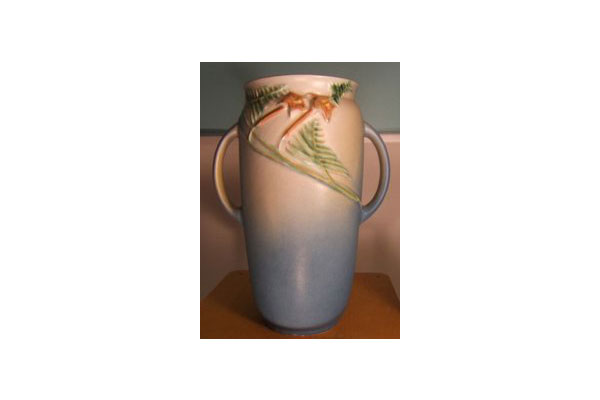Roseville pottery collectors have always actively sought after experimental and trial glaze pieces. New Roseville collectors are sometimes confused by differences between trial glazes and experimentals.
Mark Bassett’s Introducing Roseville Pottery explains that many Roseville experimental pieces started with a common or classically shaped molded vase to which Roseville decorators would hand-apply sculpted flowers, leaves, and in some cases figures. The common forms or classically shaped vases used by Roseville were most often not standard production molds. 
After hand-tooling by Roseville decorators, the vase became a one-of-a-kind Roseville experimental. Most experimental Roseville pottery has hand-incised notations on the body of the vase that often provided the name of the design or flower and the glaze color. In some cases, Roseville experimentals served as prototypes for normal Roseville production patterns. 

Unlike experimental pieces, trial glazes were used on standard Roseville pottery production forms. In most cases, Roseville trial glaze pieces have markings (letters and numbers) on the bottoms of the vase to indicate glaze colors and combinations. Similar to experimental pieces, trial glaze vases are essentially one of a kind; although collectors can find Roseville trial glazes with very similar or subtle differences from one another or even with colors that are very close to the standard production line. 
Due to the rarity and high demand for experimental Roseville pieces, prices tend to be significantly higher for experimental pieces than both regular Roseville patterns and even Roseville trial glazes. Experimental Roseville vases will typically sell for several thousand dollars even with minor damage or repair. Trial glaze Roseville vases will typically sell for 4 to 6 times the price of a standard production piece. The rarity of both Roseville experimentals and trial glazes has historically made such pieces a sound investment.
Similar to experimental Roseville vases, the more unusual the trial glaze the higher value collectors will place on the piece. Minor damage and repair on Roseville experimental and trial glaze pieces does not significantly impact the price and is often overlooked by collectors.



Thank you for this information!
I have a piece with markings, “PD99/150” (I think that’s a “P”)and “14” on the bottom, but no incised notations on the body. The bottom also has raised lettering, “Roseville U.S.A. 89-7”, which I don’t see in your picture. Can you tell me if this might be a special piece or any other information? Thanks.
Hi, I would need to see a picture. Thanks,
Thank you for this information!
I have a piece with markings, “PD99/150” (I think that’s a “P”)and “14” on the bottom, but no incised notations on the body. The bottom also has raised lettering, “Roseville U.S.A. 89-7”, which I don’t see in your picture. Can you tell me if this might be a special piece or any other information? Thanks.
Hi, I would need to see a picture. Thanks,